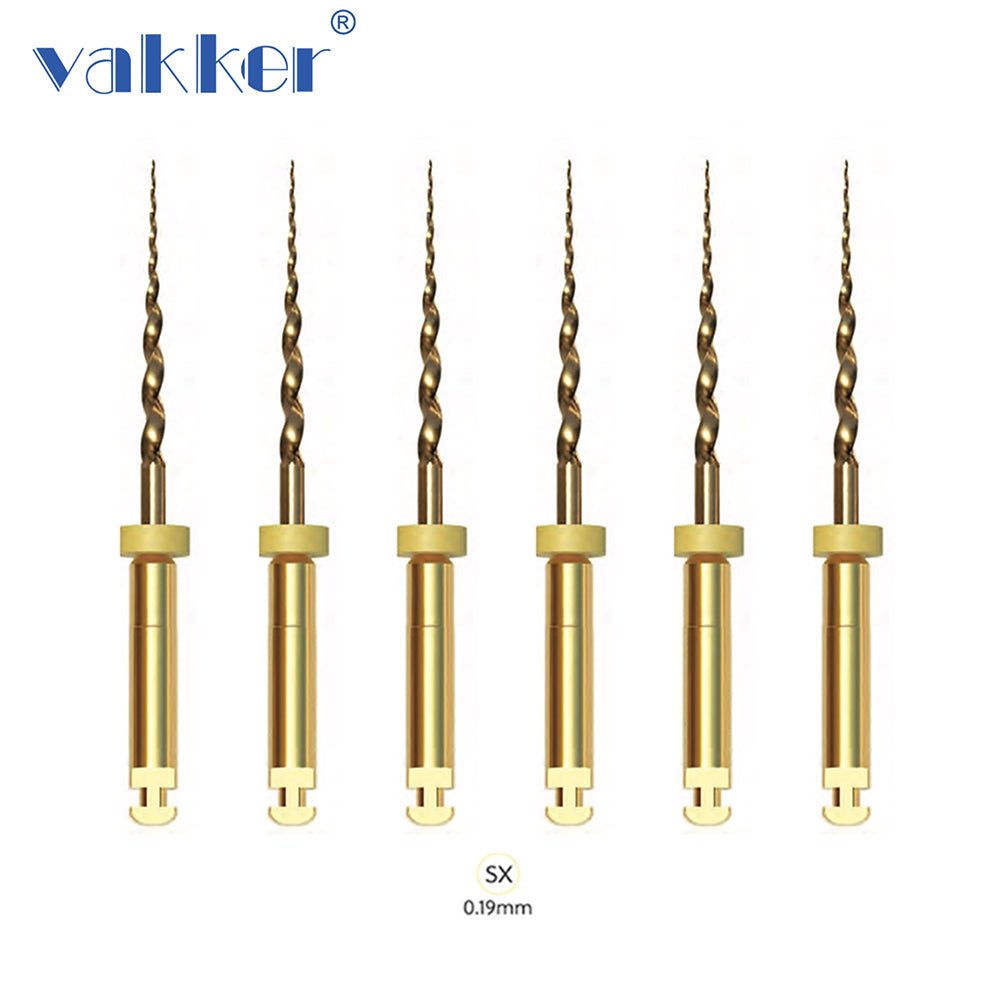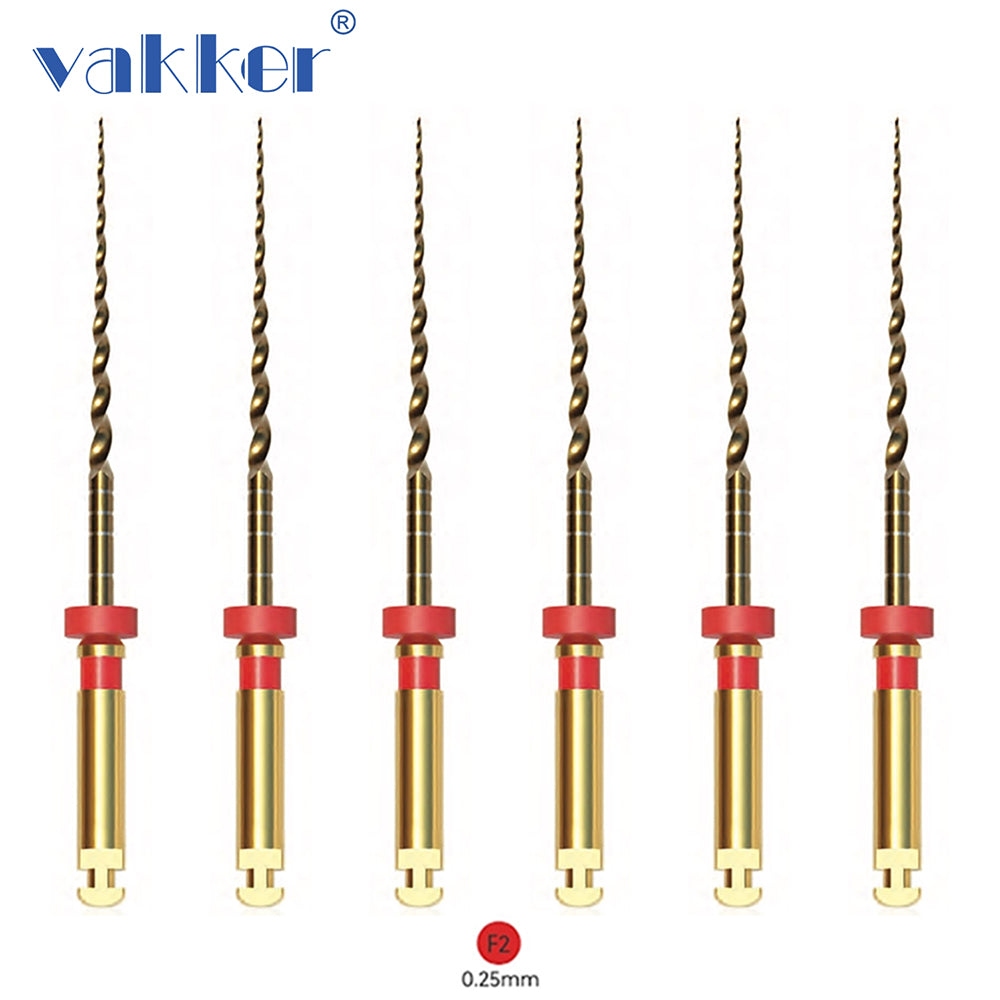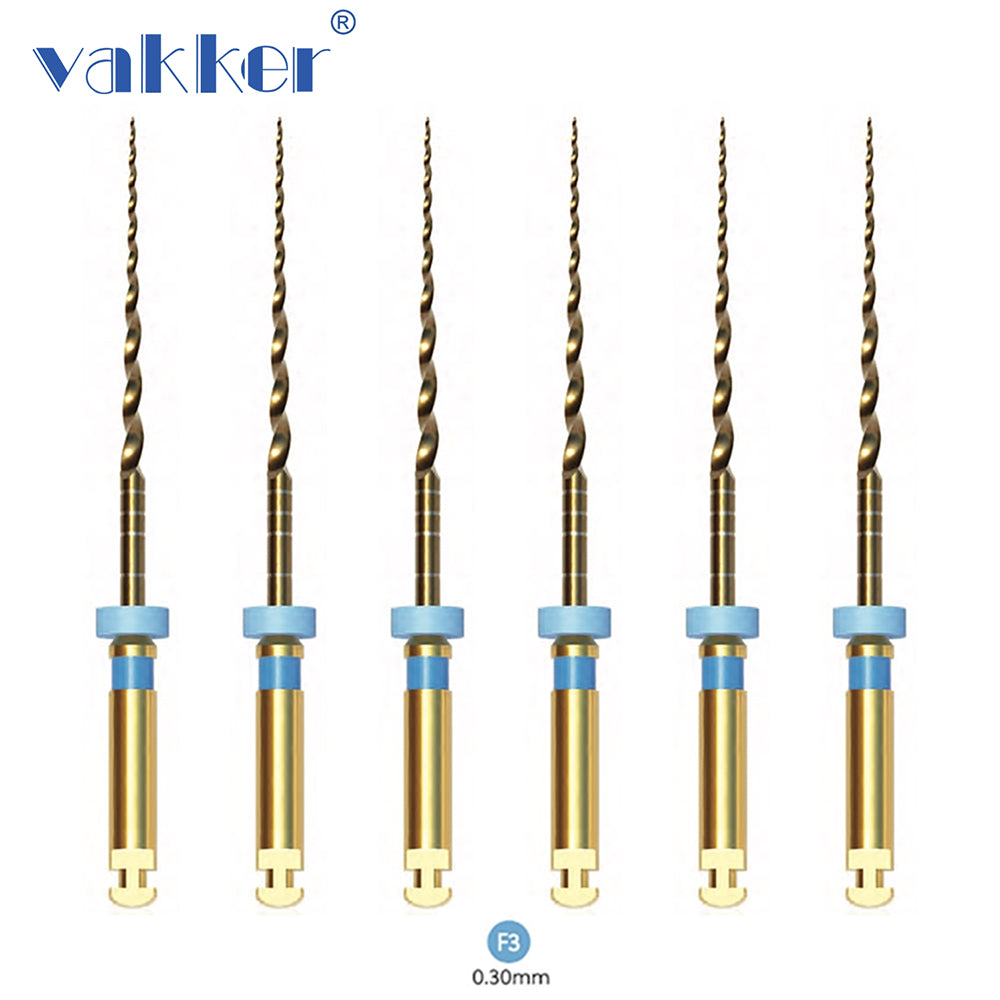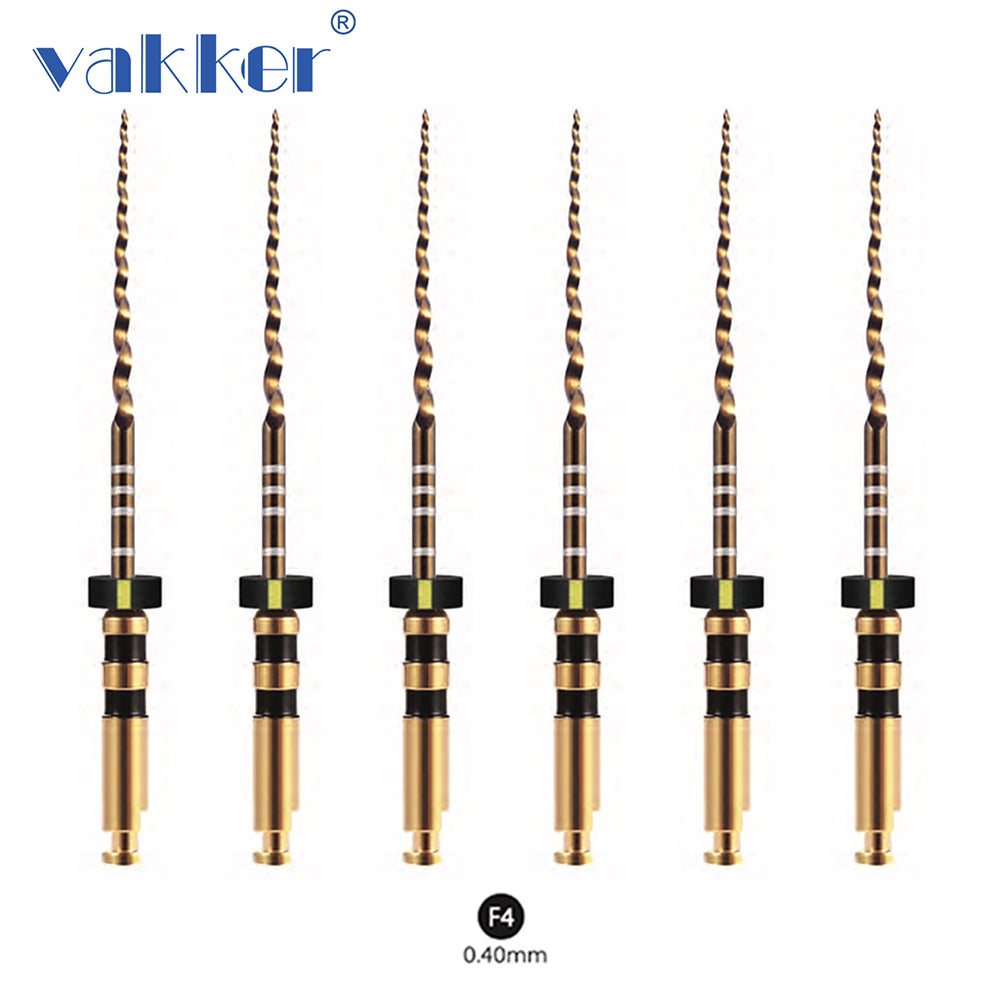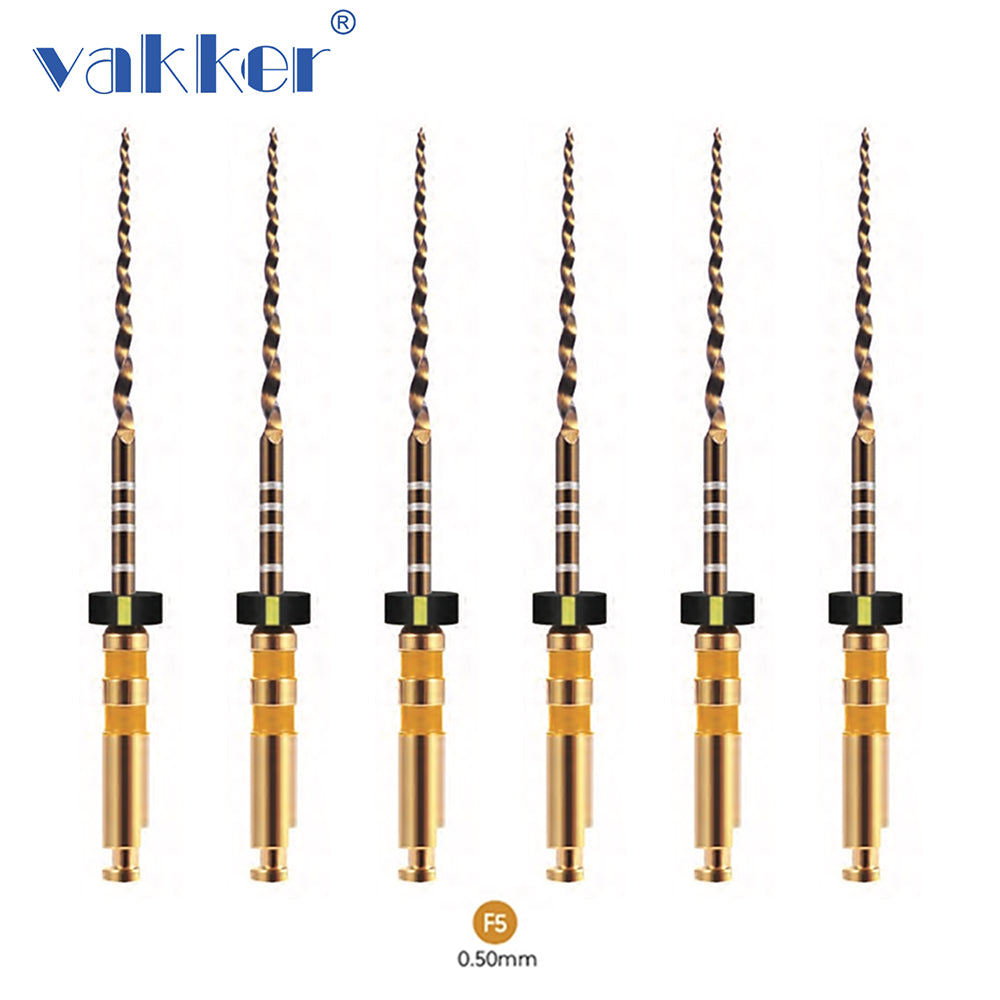Description
Composition
The cutting part of these instruments is made of a nickel-titanium (NiTi) alloy.
1) Size Information
Length: 21mm 25mm 31mm
Shaping Files: #SX #S1 #S2
Finishing Files: #F1 #F2 #F3 #F4 #F5
Taper: Variable Taper 02-09
2) Indications for use
These instruments are to be used only in a clinical or hospital environment, by qualified professional users.
Application field: for the removal of dentin and shaping of the root canal.
3) Contraindications
As with all mechanically driven root canal instruments, V-Taper Gold files should not be used in cases of severe and sudden apical curvatures due to heightened risk of separation.
4) Warnings
This product contains nickel and should not be used for individuals with known allergic sensitivity to this material.
5) Precautions
- Straight-line access is a prerequisite for proper root canal treatment, V-Taper Gold files are no exception.
- Multiple-use disinfection and re-sterilization cycles may lead to increased risk of file separation.
- These instruments should not be immersed in a sodium hypochlorite solution.
- Clean the flutes frequently during instrumentation, inspecting for signs of distortion or wear, such as uneven flutes, dull spots.
- Frequently irrigate, recapitulate and irrigate the canal throughout the procedure, minimally after using each file.
- V-Taper Gold files should only be used in regions of the canal that have a confirmed and reproducible glide path. Establish a reproducible glide path using hand files, at least an ISO 015 size.
- Use the Shaping Files (S1, S2, and SX) with a brushing action on the withdrawal stroke in order to create straight-line radicular access.
- Use the Finishing Files (F1, F2, F3, F4, and F5) with no brushing action.
- Use the appropriate finishing files to passively follow the canal to the working length, and then withdraw immediately.
- V-Taper Gold files are manufactured with a process that results in a file that has a gold appearance. Due to this proprietary processing, V-Protaper Gold files may appear slightly curved. This is not a manufacturing defect. While the file can be easily straightened using only your fingers, it is not necessary to straighten the file prior to use. Once inside the canal, the V-Taper Gold file will follow the anatomy.
- Always use minimal apical pressure. Never force the files down the canal.
- For optimal usage, torque control devices are recommended.
- The V-Taper Gold rotary files can be used at motor speeds between 250 rpm and 350 rpm. Recommended motor settings:

6) Features
- New Generation of raw material
- Advanced technical process
- Shocked Toughness
- 200%-500% Fracture Resistance Improved
7) Package
6pcs/pack with the manual, single size or assorted
8) Application Sequences
- Establishing linear channel
- Using #10 #15 K file to detect the root canal
- S1, if necessary, SX reaches the length of #15 K file
- Using #15 K file to measure and determine the working depth
- S1 to the working length
- S2 to the working length
- F1 to working length
- F2 to working length (minimum recommended size)
- Selective use F3 to working length
9) Application Principles
- Choose appropriate cases (note the sharp and curve root zone)
- Determine the existence of the linear channel
- Check the root canal to be unobstructed
- Sufficient lubrication and flushing of root canal
- Often clean the file blade and check the deformation
- Take the recommended file movement way of preparation for normal root canal
- anatomical without excessive bending, calcification, etc.


